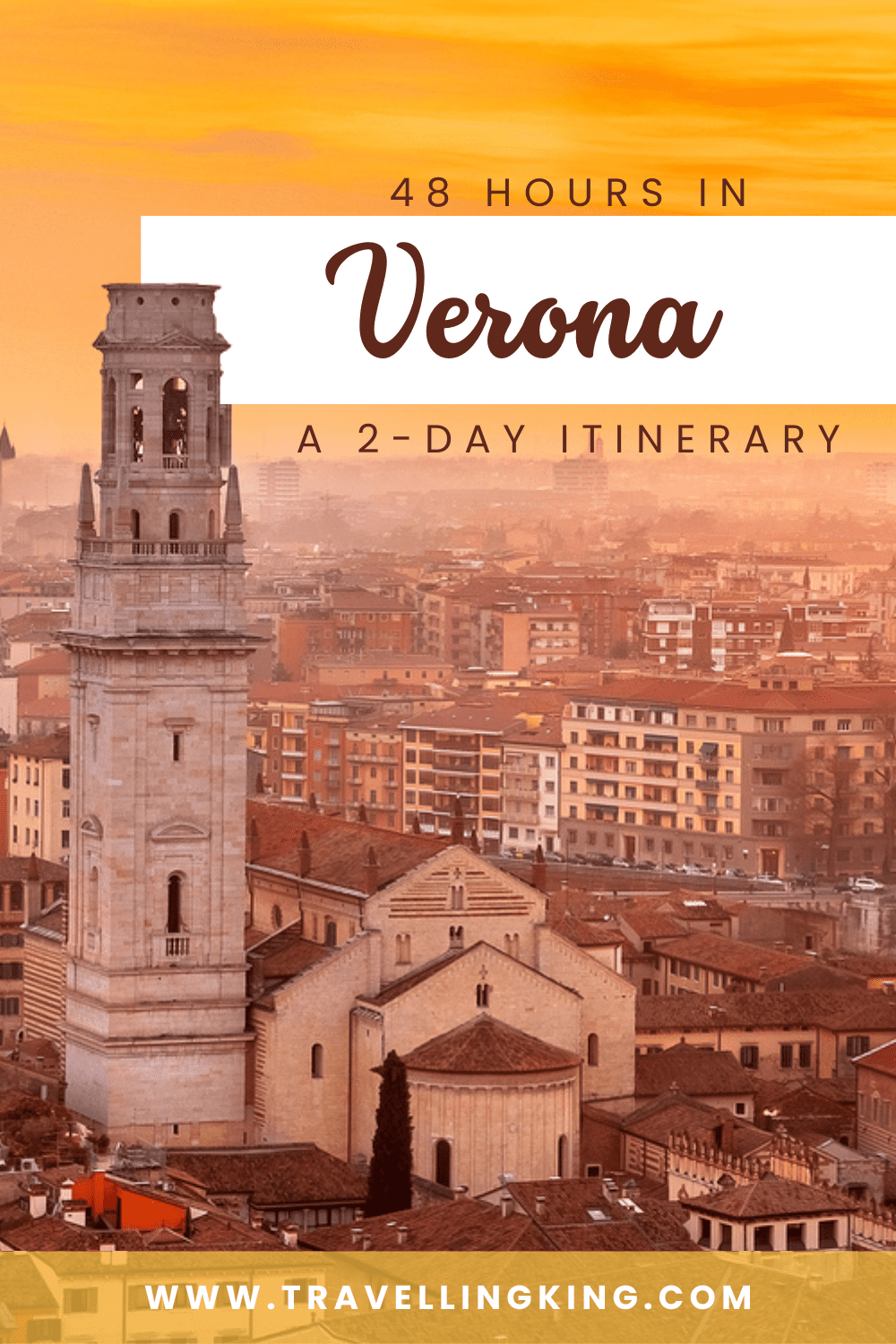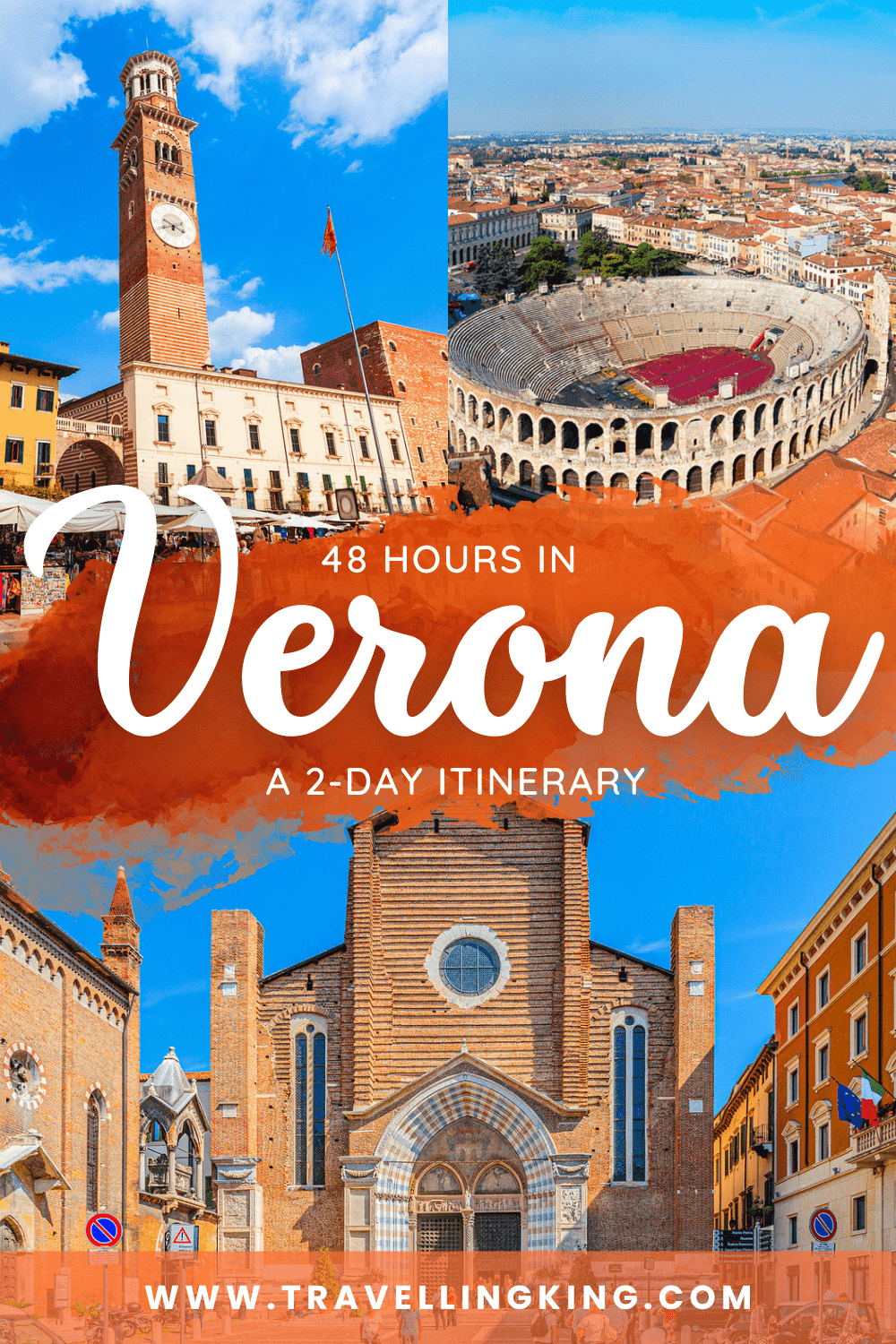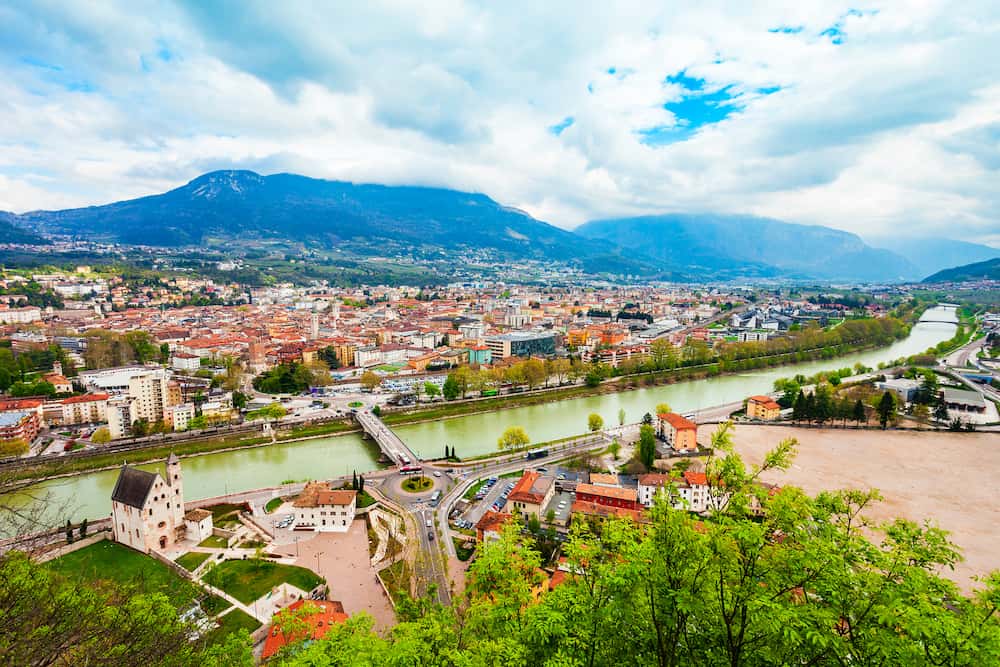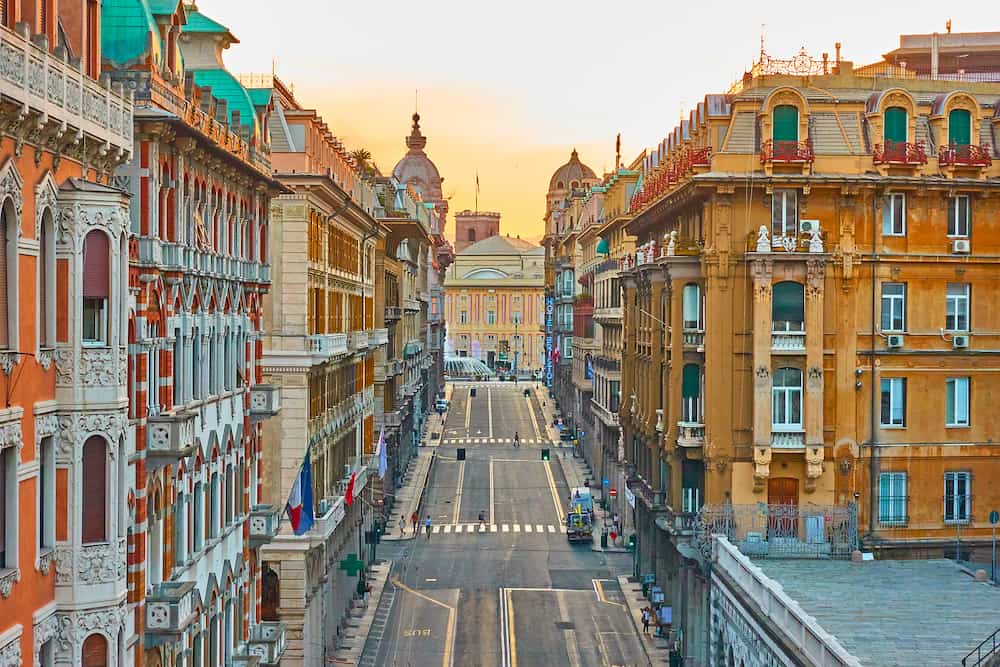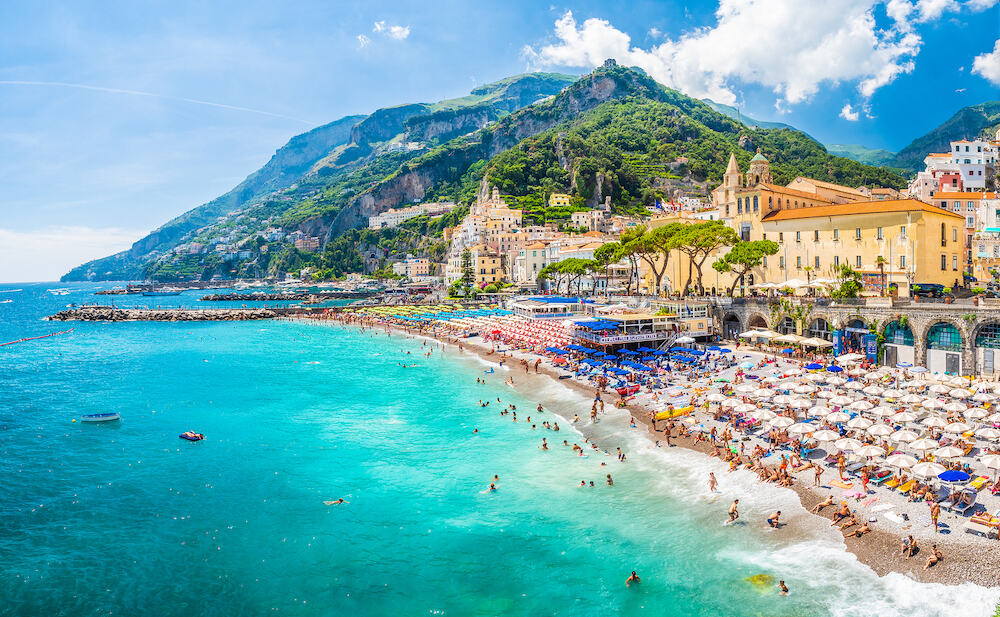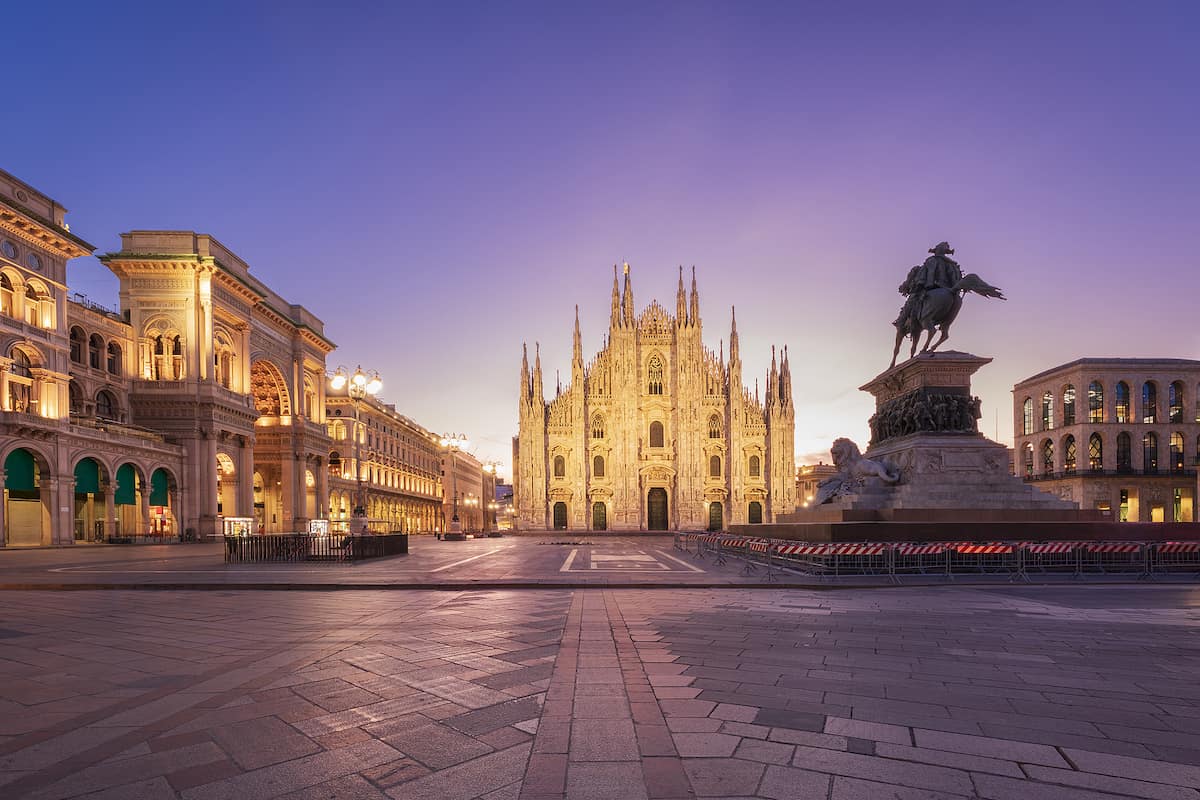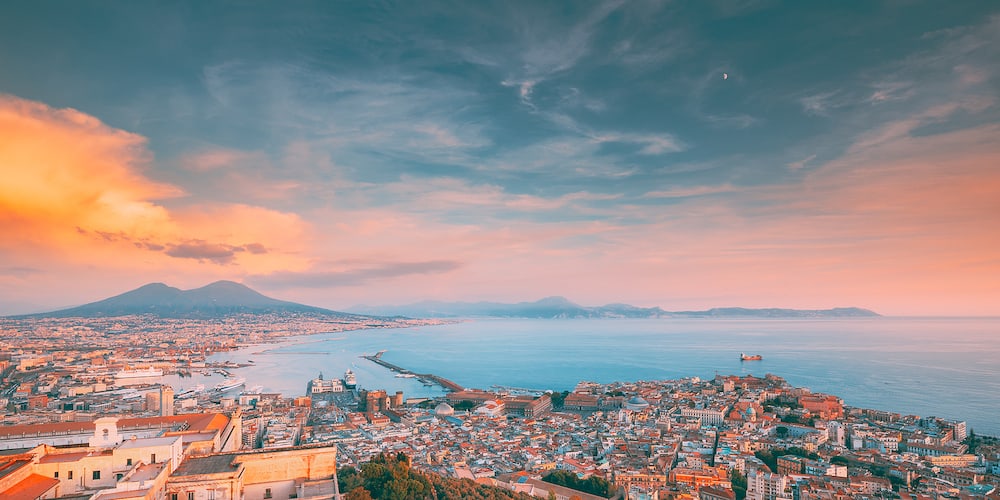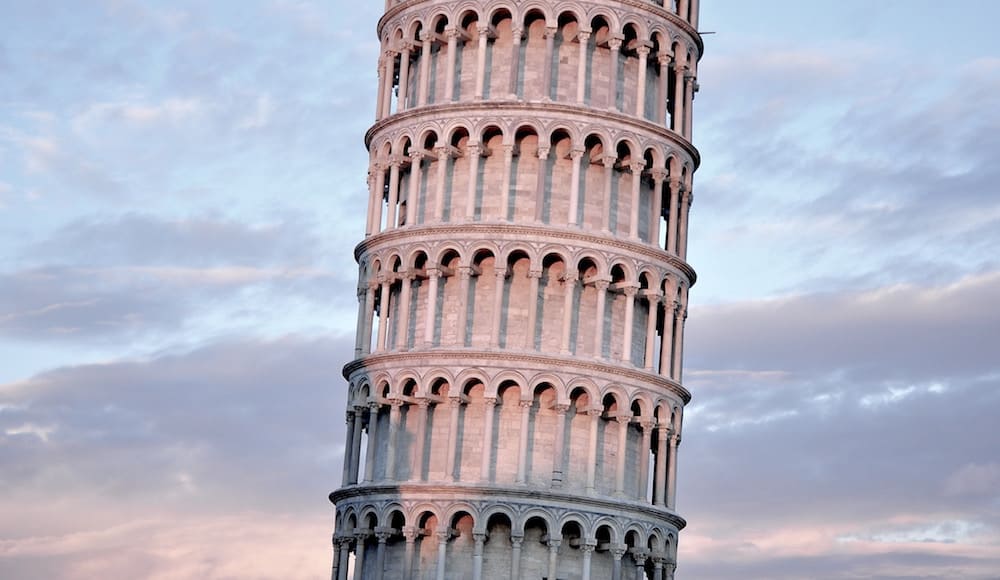48 Hours in Verona – 2 day Itinerary
Despite being the setting of the famously tragic Shakespearean play Romeo and Juliet, fair Verona is anything but miserable in reality. It’s a compact Italian city on the Adige River between Milan and Venice with the Dolomite Mountains only a few train stops north.
Verona is also the perfect base for a trip to Lake Garda. But with so many other amazing spots in Northern Italy, is Verona worth visiting? And is 48 hours in Verona enough time?
Absolutely! If you’re a romantic, you’ll love visiting attractions dedicated to the star-crossed lovers, sipping wine on outdoor terraces, and tasting gelato by the river. You’ll enjoy watching a concert in the Verona Arena and walking along the cobbled streets back to your boutique hotel. It’s an ideal place to jet away for a romantic weekend or spend 2 days in Verona on an Italian rail trip.
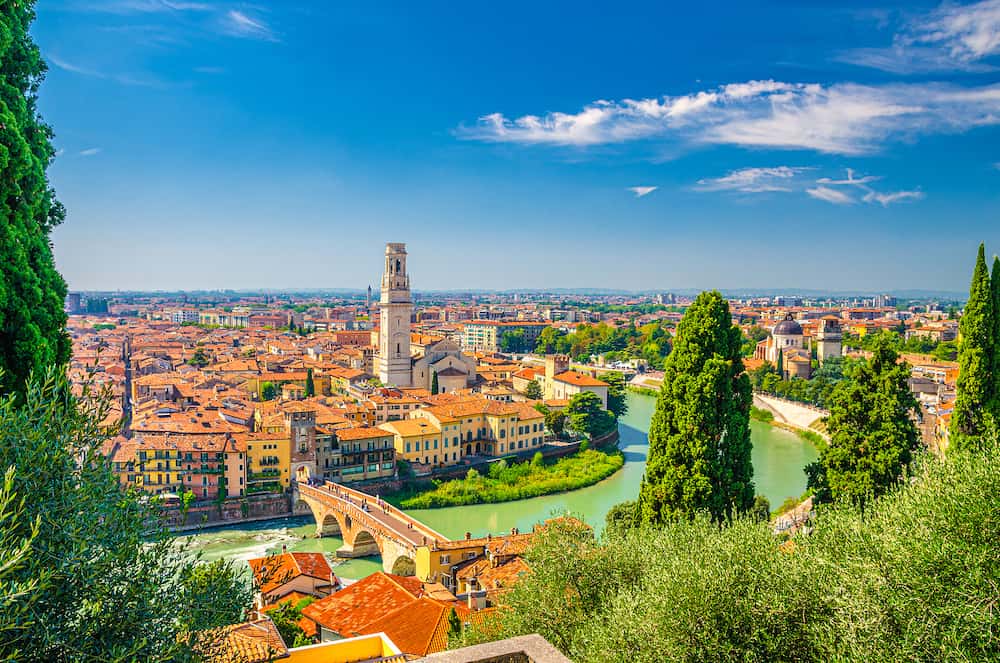
If you’re wondering how many days in Verona is ideal or how many days do you need in Verona? well it all depends on what your plans are? You could easily spend 2 weeks in Verona or 2 months and still not see or do everything.
Below is a great guide on what to do in Verona for 2 days because sometimes 2 days in Verona is all you have, especially if you’re going over on a cruise or you’re short on time and want to be able to tour some of the other areas within Verona.
This Verona travel guide will give you a complete 48 hours in Verona itinerary. It will also show you where to stay in Verona, how to get around, and the best time to visit. You’ll learn exactly what to see in Verona and the best things to do in Verona in two days.
Plan your trip
Save on fees abroad with the Wise Card—use it at ATMs, restaurants, and for flights or hotels in over 150 countries. Manage 40+ currencies in real-time with the Wise app.
Need Help Planning?
- Cheap Flights: Find the best deals.
- Accommodation: From hostels to luxury stays.
- Car Rental: Affordable options worldwide.
- Sightseeing Tours: Explore without breaking the bank.
- Travel Adapter: One adapter for all your needs.
- Travel Insurance: Don’t risk it—stay covered.
This post includes affiliate links. Read my full disclosure and content policy.
The Best Time to Visit Verona
Like most of Northern Italy, Verona enjoys a Mediterranean climate with warm summers and cool winters. July is usually the hottest month of the year with highs of 31°C/87°F and 20°C/70°F is a rare low. January is often the coldest month with highs of 7°C-45°F and dips down to -2°C/30°F occasionally.
Spring (April-May) and autumn/fall (September) are the shoulder seasons where the weather is warm but there are fewer crowds. When everything is considered, these are the best months to visit Verona. The city is at its busiest during the peak summer months of July and August.
Travel to Verona and accommodation prices are at their highest between April and September. If you want to spend a weekend in Verona on a budget, the best time to visit is between January-March and October-December, except near Christmas.
Verona isn’t a year-round city like Rome where everything stays open. Don’t be surprised if attractions have shorter opening hours and some eateries close down during the winter months.
One of the biggest festivals in Verona, Italy is the Opera Festival which takes place from mid-June to August. They schedule three to four evening shows a week in the Verona Roman Amphitheatre and it’s truly a spectacular occasion.
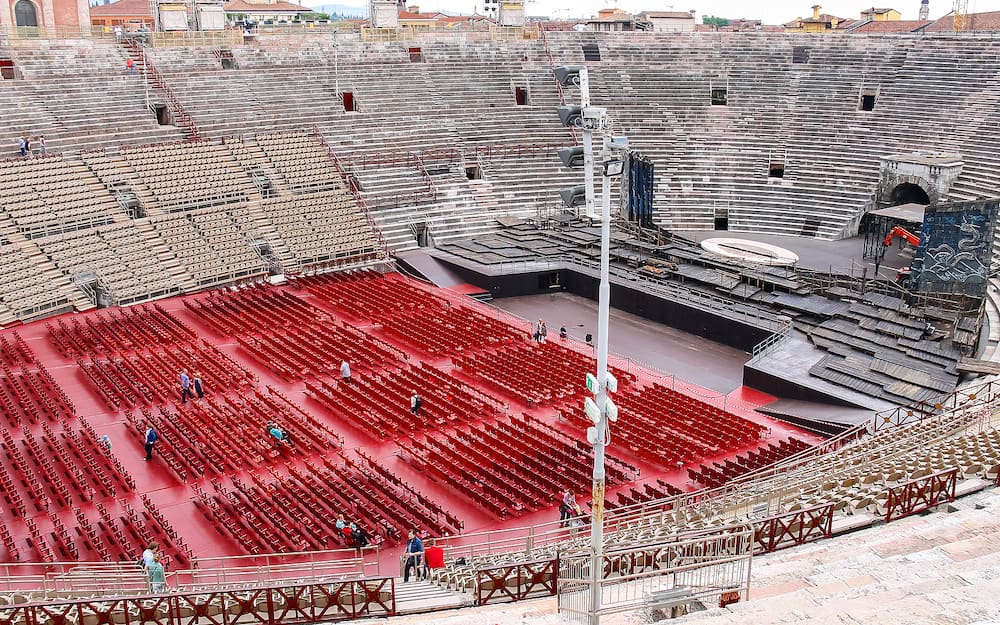
How to Get Around Verona
All the top sights and attractions in this city are within walking distance of each other. That’s one reason why spending 48 hrs in Verona is the perfect amount of time!
Central Verona is a restricted traffic area, with only locals being able to drive around freely. You’ll find that many of the streets and main squares are pedestrianised.
If you have a disability, however, you can request a city pass from the council to drive around Verona at your leisure. Taxis are another option but Verona doesn’t have rideshare services like Uber.
Buses operate from 5:00 to midnight and you can buy tickets through the Ticket Bus Verona app. You can also buy tickets from newsagents and tobacconists, but these are often not conveniently located next to bus stops.
Single tickets last for 90 minutes or you can buy day passes. Verona also offers locals and visitors e-bikes with docking stations that you can pay for via a contactless credit card.
Where to Stay in Verona
The best neighbourhood to stay in during your trip to Verona is, by far, Città Antica. This is the historic centre of the city which connects to other Verona neighbourhoods across the River Adige via many bridges. At a push, you could consider staying in another neighbourhood if it’s close to one of these bridges.
The Hostello – This is the best hostel in Verona and the top accommodation option for budget travellers. It’s situated just outside of Città Antica in the ancient Veronetta neighbourhood near the Ponte delle Navi bridge.
The University of Verona is in this part of the city which means it has lots of budget-friendly bars, cafes, and restaurants nearby. The Hostello is a cosy independent hostel with small dorms, a secluded garden, and all the amenities you’ll need during your stay.
Hotel Giulietta e Romeo – If this guesthouse were in a more expensive Italian city like Venice or Florence, it would cost twice the price. But Hotel Giulietta e Romeo’s rates start from €80 per night and, for that, you can stay in a modern hotel with balconies in some of the rooms and clean, modern decor.
Their breakfast buffet includes pastries and pancakes and they offer various suites suitable for an intimate couples weekend away or a family break.
Palazzo Victoria – From €170 per night, this former palace turned 5-star hotel strikes the perfect balance between old-world opulence and modern amenities.
It’s in a phenomenal location next to the Porta Borsari and close to Juliet’s House and Piazza Delle Erbe. And it has a beautiful garden terrace and boasts luxury features like soaking baths in the rooms.
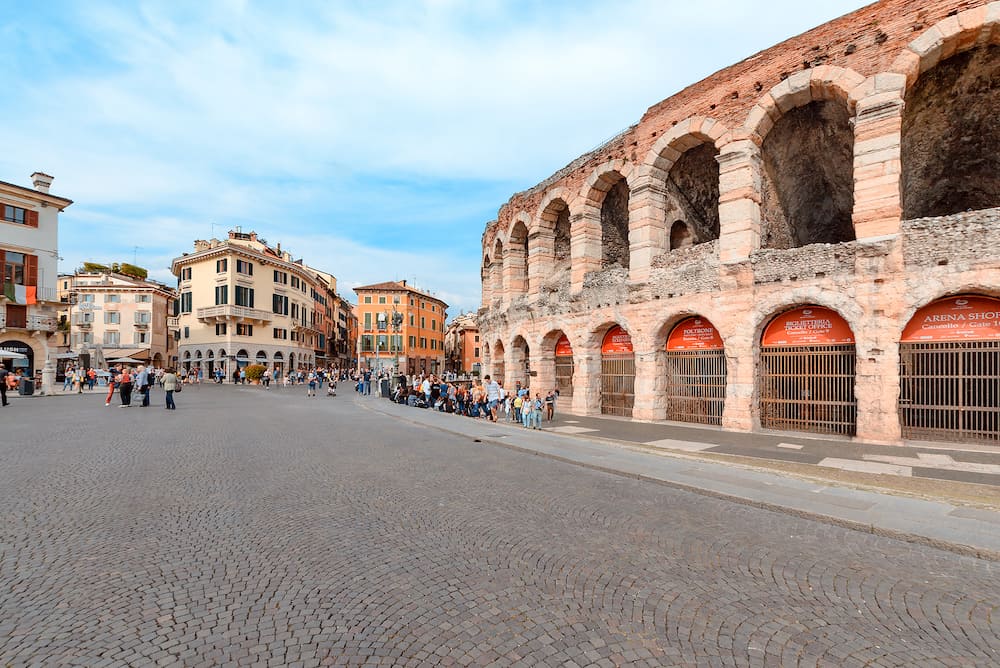
Things To Do in Verona
Witness the View from Castel San Pietro
When you visit a place as beautiful as Verona, you have to seek out a viewpoint to really appreciate how stunning it is. One of the best things to do in Verona is to climb up Castel San Pietro to do exactly that.
It’s completely free to walk around the outside terrace of this Romanesque fortress. Unless you want to avoid walking up 231 steps in the heat, of course, then you can pay a small fee and head up via the funicular.
You’ll also get to cross the Ponte Pietra bridge to reach the castle which is a restored Roman arch.
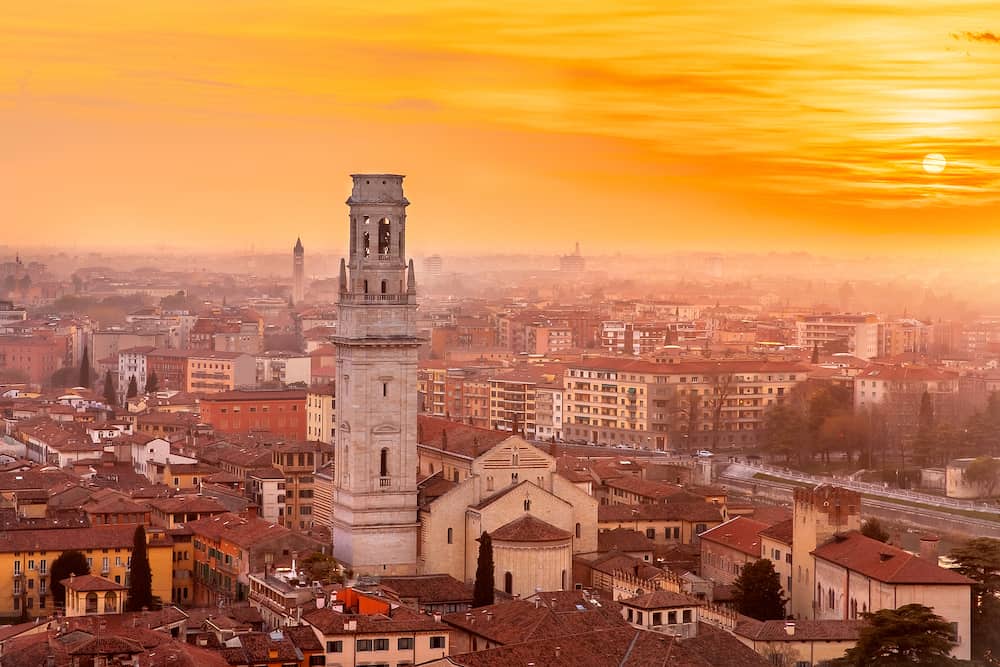
Wander Around the Piazza Delle Erbe Markets
Piazza Delle Erbe is one of the main squares in Verona. It’s home to the striking Madonna Fountain, the Lamberti Bell Tower, Palazzo Della Ragione, and many restaurants.
Every morning from Monday to Saturday, you can stroll around the food and souvenir markets that take over this square.
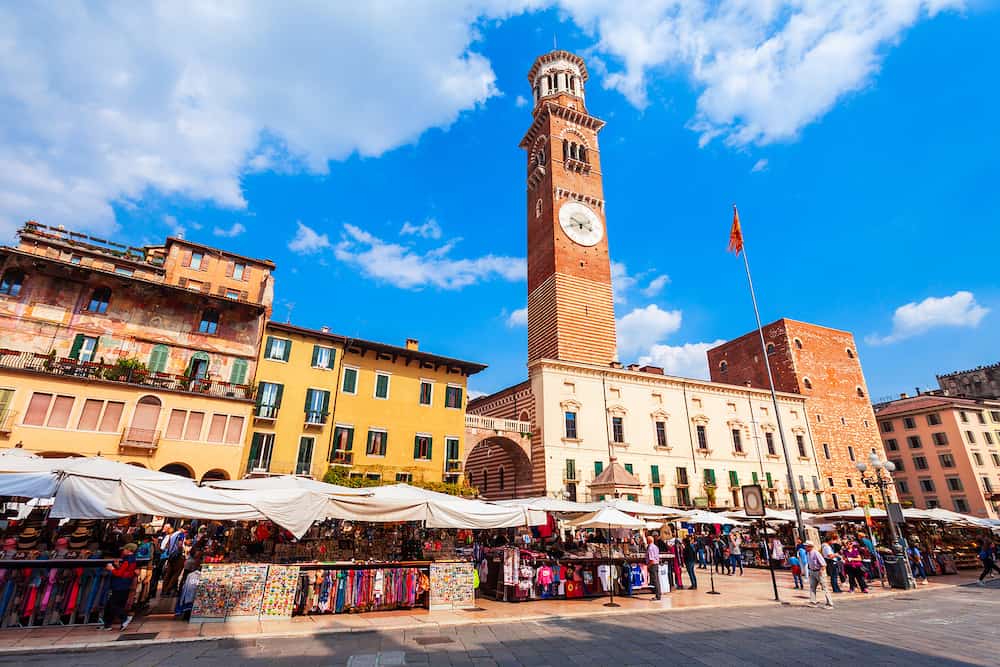
Catch a Show at Verona Arena
Some visitors describe Verona as a smaller Rome. It’s easy to see why. Verona also has a Roman colosseum (though nowhere near as big), plenty of beautiful churches, and a river that runs through it.
But it may surprise you to learn that Verona’s colosseum is well-preserved and in a much better state than the one in Rome. It’s a working building made to seat 20,000 and they host performances every summer.
If you aren’t visiting Verona during the summer months, you can still visit the arena during the day. It’s included in the Verona card which includes entrance to most of Verona’s top attractions, museums, and churches.
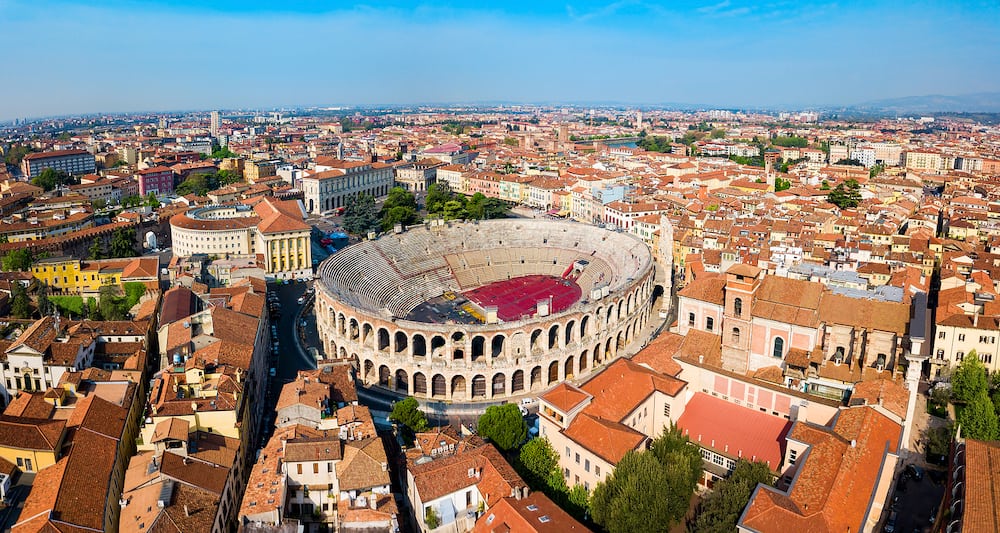
Taste the Local Cuisine
Is there better cuisine than Italian cuisine? Probably not. Gelato, pasta, pizza, risotto, and the list could continue. But there are 20 Italian regions and each has its own specialities. Verona is in the Veneto region (the same one as Venice) and their signature dishes are very different to, say, Naples in the south.
Veneto is one of Italy’s major wine-producing regions so you should sample as much wine and prosecco (responsibly!) as possible. Soave wine, in particular, is native to Verona. It’s made with Garganega grapes and it’s a dry, light, and fruity white wine.
One of Verona’s most popular exports is salami. Order a mezze platter from a trattoria in Verona with olives, bread, grapes, and a local cheese like Monte Veronese.
Still hungry? Follow it up with a plate of risotto all’amarone. This is a risotto cooked with red wine instead of the usual white wine which gives it a deep purple colour.
Though gelato is historically a Florentine or Sicilian treat (depending on who you ask!), it’s available everywhere.
Choose gelaterias that serve gelato from metal tins because their gelato is more likely to be homemade. And avoid gelato with bright, unnatural colours as this will have artificial ingredients.
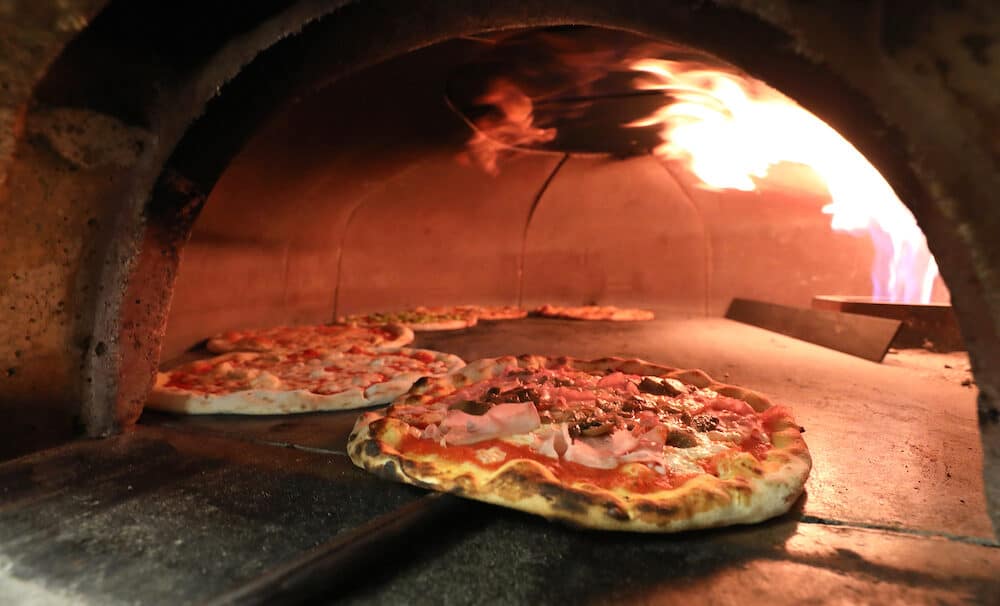
Places to Visit in Verona
Juliet’s House
If you’re able to suspend your grasp on reality for an hour or two, then you should visit Juliet’s House. Yes, Juliet Capulet is a fictional character from the Shakespearean play Romeo and Juliet which dates back to 1597 and she didn’t actually exist let alone live in this house.
The play is the reason why most people can answer the question, “Where is Verona?” so it’s understandable that the city would lean into this connection.
Juliet’s House features an exhibition of the character of Juliet, including some costumes from the 1968 Italian film adaptation of the play. You’ll be able to step onto “her” balcony and even send a letter to the Juliet Club.
This is an organisation of volunteers who respond to letters from around the world asking for advice on matters of the heart.
Outside of the museum is a courtyard with a statue of Juliet and, apparently, if you rub her right breast you will become lucky in love! There’s also a wall of graffiti where lovers write messages to their partners or crushes.
Yes, it’s corny, but you haven’t really visited Verona if you haven’t visited any of the Romeo and Juliet sites. You can also visit Romeo’s house and Juliet’s tomb, too!
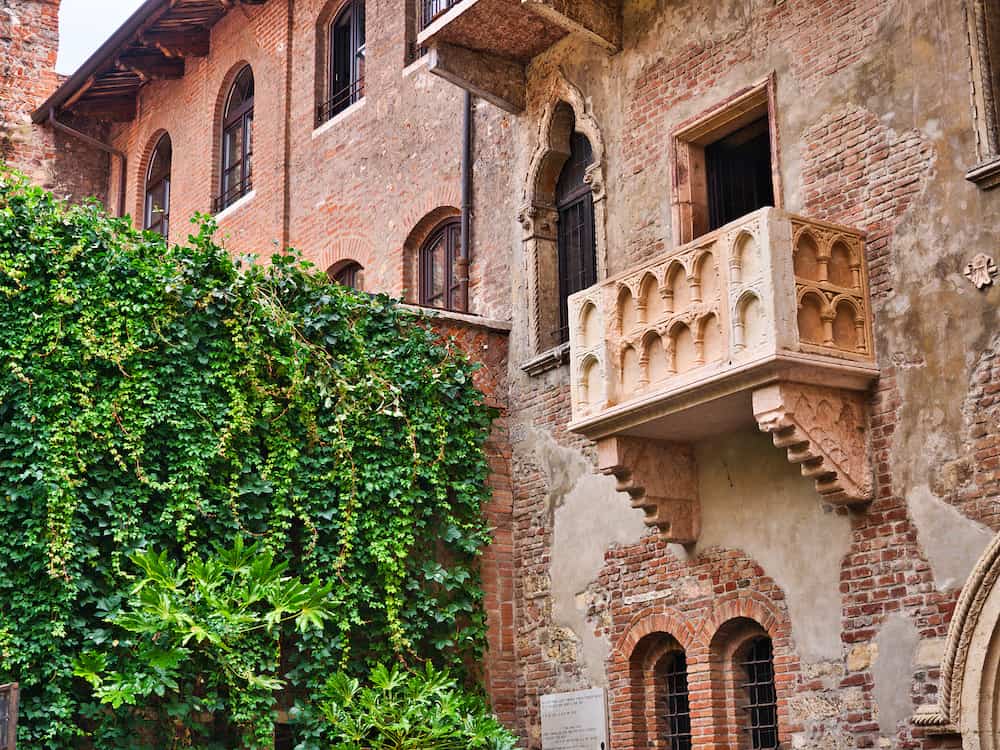
Castelvecchio Museum & Bridge
Castelvecchio is a former medieval castle built by the powerful Scaliger family in the 1300s. Today, it’s a museum housing a plethora of artefacts from different eras including paintings, sculptures, artillery, and statues.
It’s one of the most important museums in Verona and well worth visiting if you want an extra dose of culture on your trip.
Next door to the museum is the Castelvecchio or Scaligero Bridge. It also dates back to the 1300s as they were built at the same time though it needed to be reconstructed after WWII.
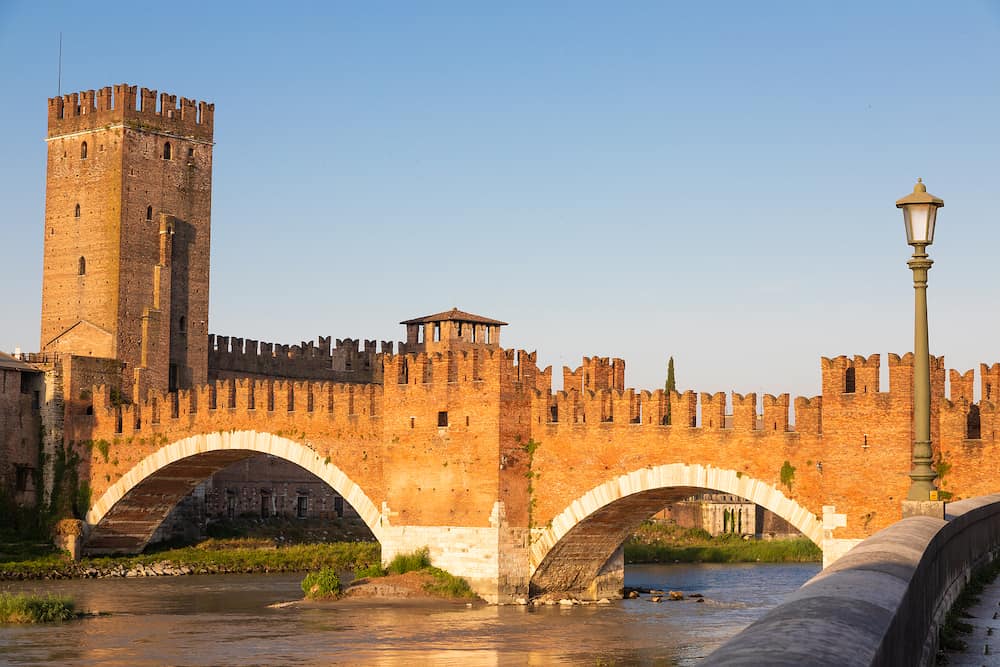
Basilica di Santa Anastasia
You can’t say you’ve visited Italy without having tasted gelato or set foot in a church. They’re just too pretty. Verona has three main churches: Basilica di Santa Anastasia, Verona Duomo, and Church of San Fermo Maggiore.
If you have the time, you should visit all three! But the 13th-century Basilica di Santa Anastasia has the most impressive interiors.
As you walk around the church, you’ll spot a historic Gothic fresco by an artist named Pisanello. The church’s alcoves have gold-plated columns and every surface from the ceiling to the floor has an ornate design.
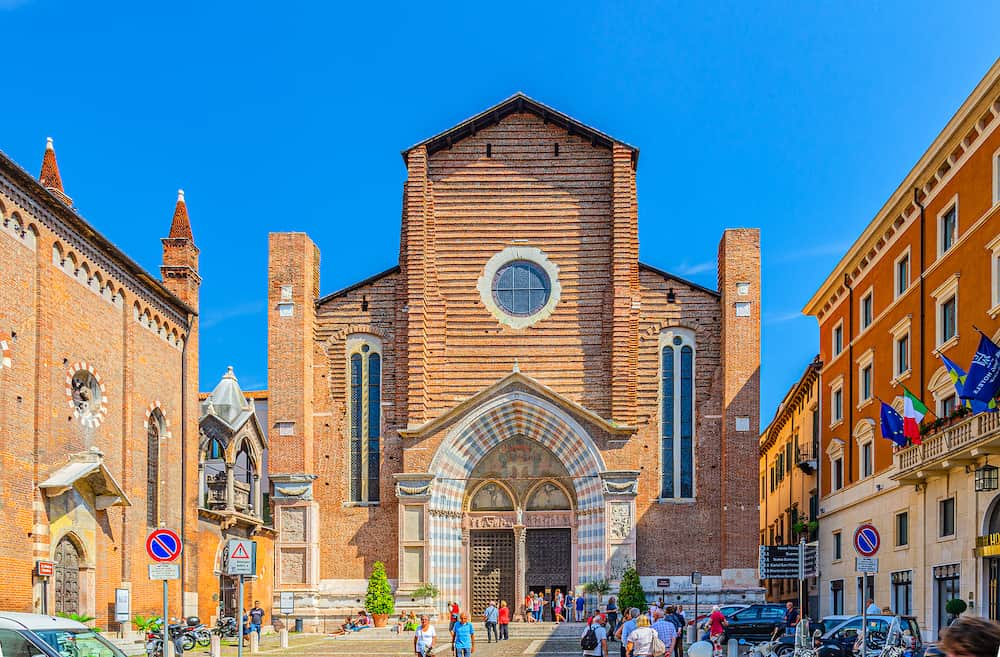
Tours To Do in Verona
Food and Wine Tour
As already mentioned, the Veneto region is the biggest producer of wine in Italy and its food is amazing too. But that doesn’t mean it’s all good.
By joining a food and wine tour, an expert will take you to all the best cafes, restaurants and bars in the city so you can ensure you’re tasting Verona’s best culinary delights. On this tour, you’ll taste pastries, espressos, salami, cheese, wine, and more!
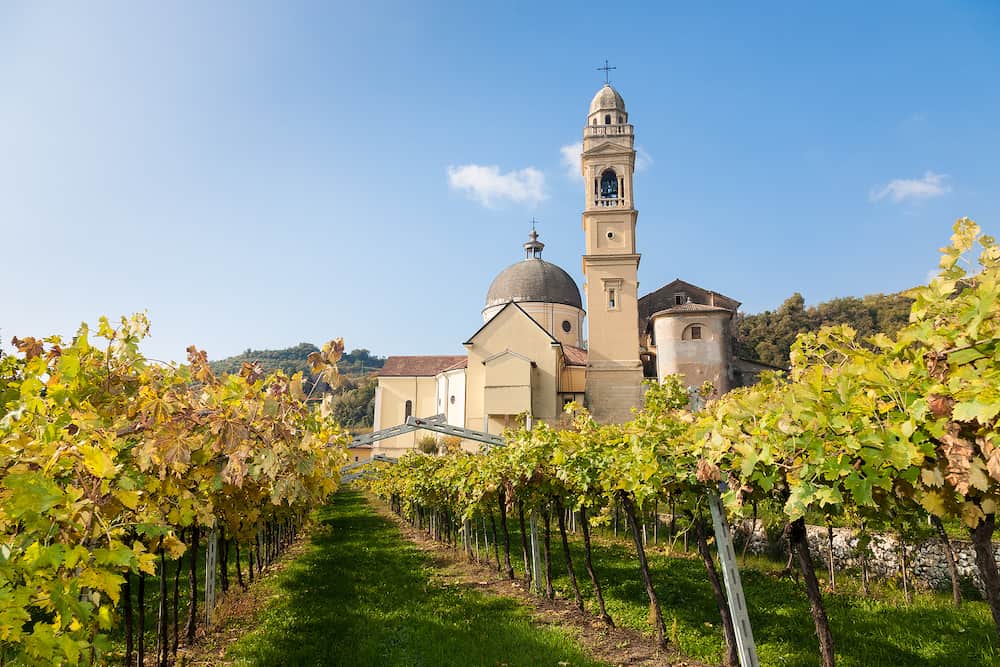
Bike Tour
Verona is a small city, so you could join a walking tour and see a lot. But why not take advantage of Verona’s motorised traffic restrictions and zero hills?
This bike tour is perfect when you’re short on time and want to see as many sites in Verona as possible. You’ll ride along the banks of the Adige River all the way down to Porta Nuova and the 16th-century city gates.
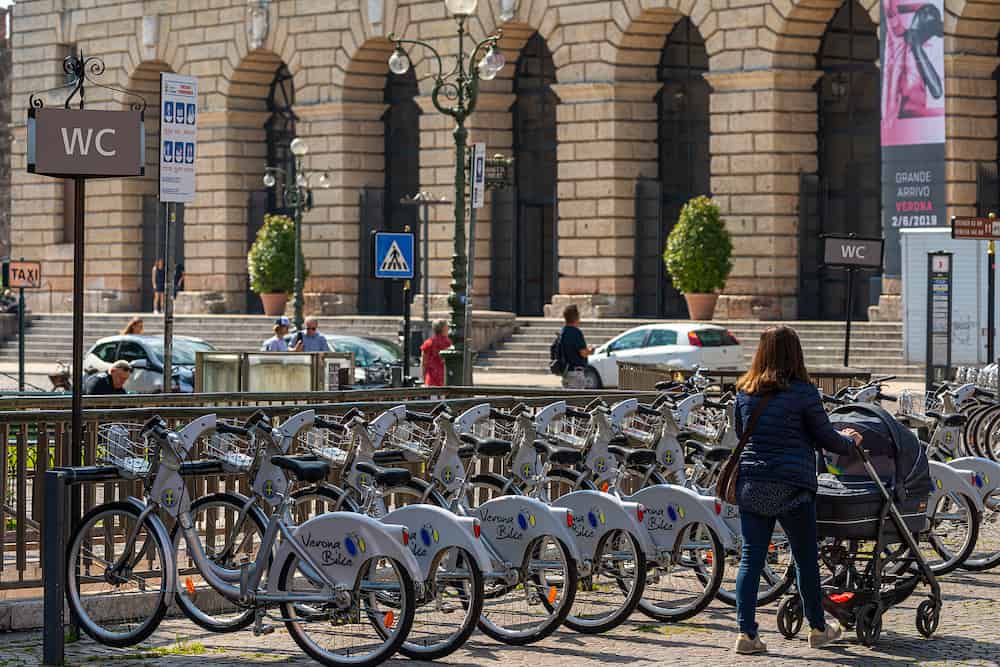
Lake Garda and Sirmione Tour
You really cannot visit Verona without taking a half-day tour of Lake Garda. It’s Italy’s largest lake and has beautiful scenery.
This tour makes it easy to hop on a small bus to the quaint lakeside town of Sirmione, stroll through the streets and take a boat cruise before heading back to Verona. Easy peasy!
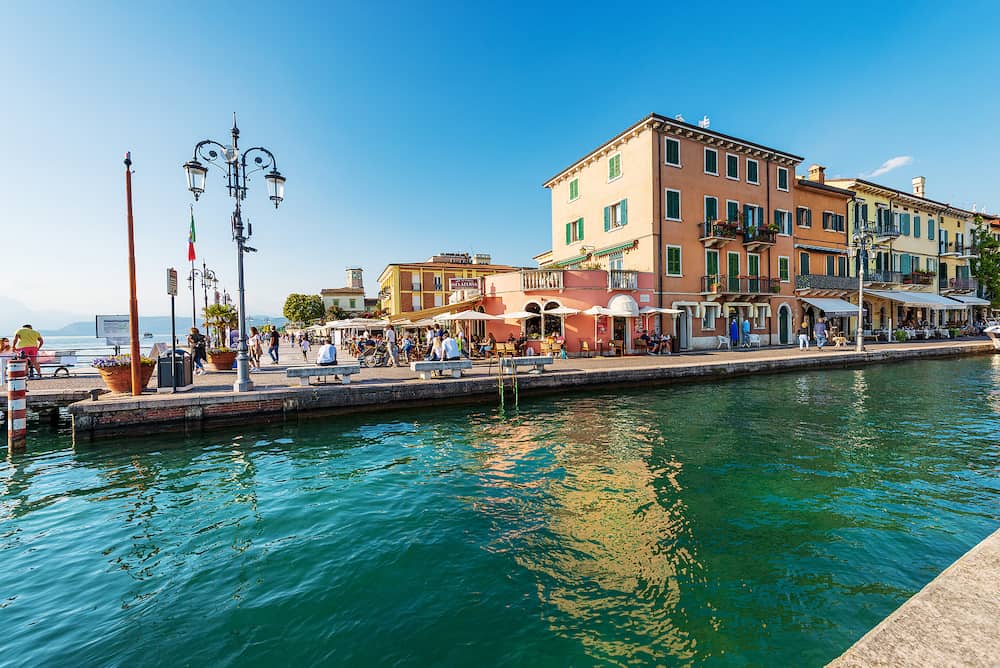
48 Hours in Verona
Day 1 in Verona
Start your first day in Verona as the locals do with a pastry and espresso at Pasticceria Flego. Beat the crowds by heading straight to Juliet’s House to learn all about Verona’s most famous fictional daughter.
This is one of the busiest attractions in the city so if you want to get good photographs, it’s worth being an early bird. Next, take a stroll around Piazza Delle Erbe and search for treasures to take back home. When you’re ready for lunch, head to Osteria Caffè Monte Baldo for a mezze platter.
It’s your duty to eat as much gelato as possible. So if you have some room left in your stomach, make your way to Gelateria Ponte Pietra.
Get the pistachio! Next, cross the Ponte Pietra to Castel San Pietro for panoramic vistas across the city. Take the funicular or walk the hundreds of steps to the top. Afterwards, explore the wonders hidden inside the beautiful Basilica di Santa Anastasia.
Get lost in Verona’s winding narrow streets to work up an appetite for dinner at Osteria Ponte Pietra, one of the best restaurants in the city with views of the river.
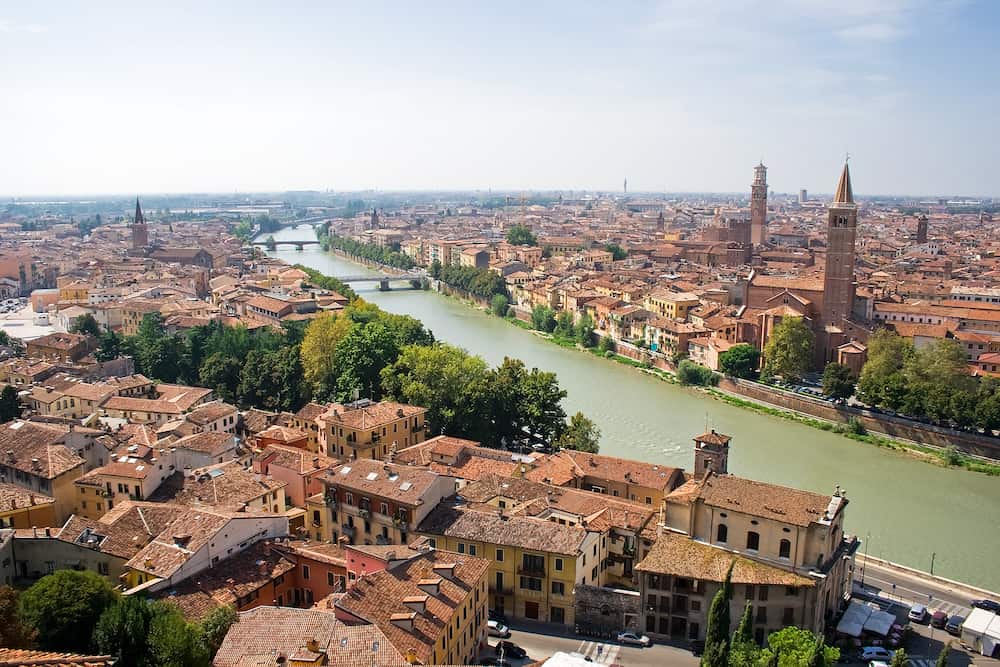
Day 2 in Verona
Start your day bright and early with a half-day trip to Lake Garda. It’s only a 90-minute drive to Sirmione, one of the closest lakeside towns to Verona.
While you’re there, you can take a lake cruise around Italy’s largest lake, explore Scaligero Castle, or relax on Jamaica Beach. Try gelato from Gelateria Mancini dal 1933 (avoid the other gelaterias with their bright blue bubblegum offerings!) and have lunch at Il Girasole.
When you’re back in Verona, you’ll have just enough time to check out the Castelvecchio museum and the Ponte Scaligero bridge. Enjoy traditional Veneto dishes in Greppia for dinner before heading out to catch a show at the Verona Arena at night.
Travelling outside of opera season? Head to the Romeo Bistrot & Cocktail Bar for drinks instead to squeeze in another reference to the star-crossed lovers before heading home or to your next stop on your trip in the morning.
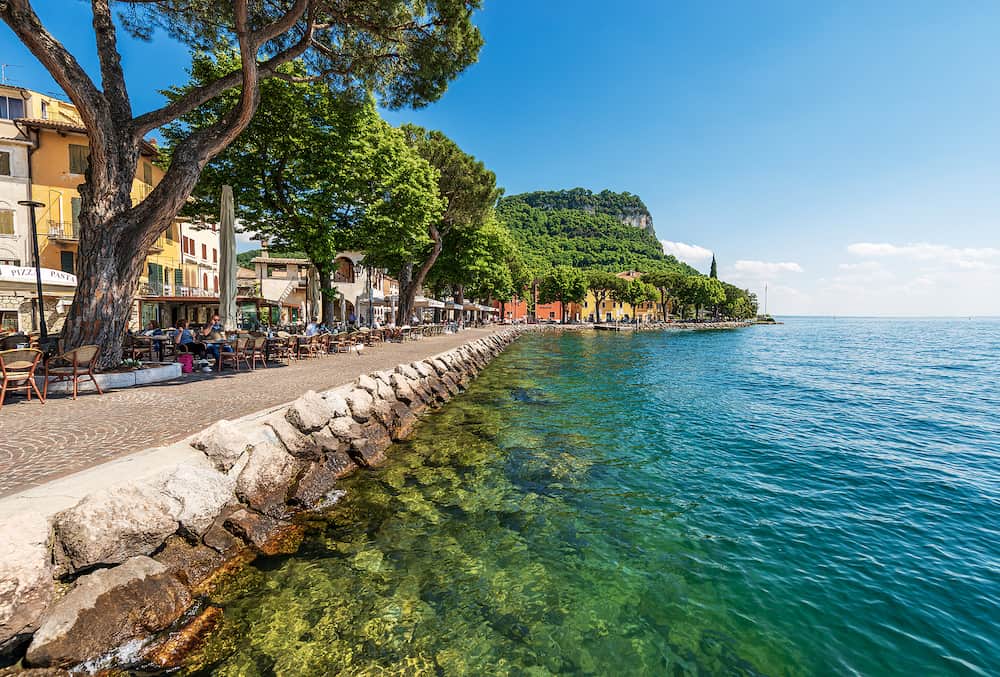
Recommended tours in Verona
- Verona Food & Wine Walking Tour in Small-group
- Verona Small-Group Bike Tour
- Semi-private Sirmione and Lake Garda Tour from Verona
- Verona Moonlight Walking Tour
- Verona Arena Skip-the-line Tour
- Gelato Making Class in Verona
- Fascinating Verona: in the Footprints of Romeo and Juliet
- Dark Historical Verona Walking Tour
- Verona City Hop-on Hop-off Tour
If you’d like to save it for later, please save it to Pinterest.
